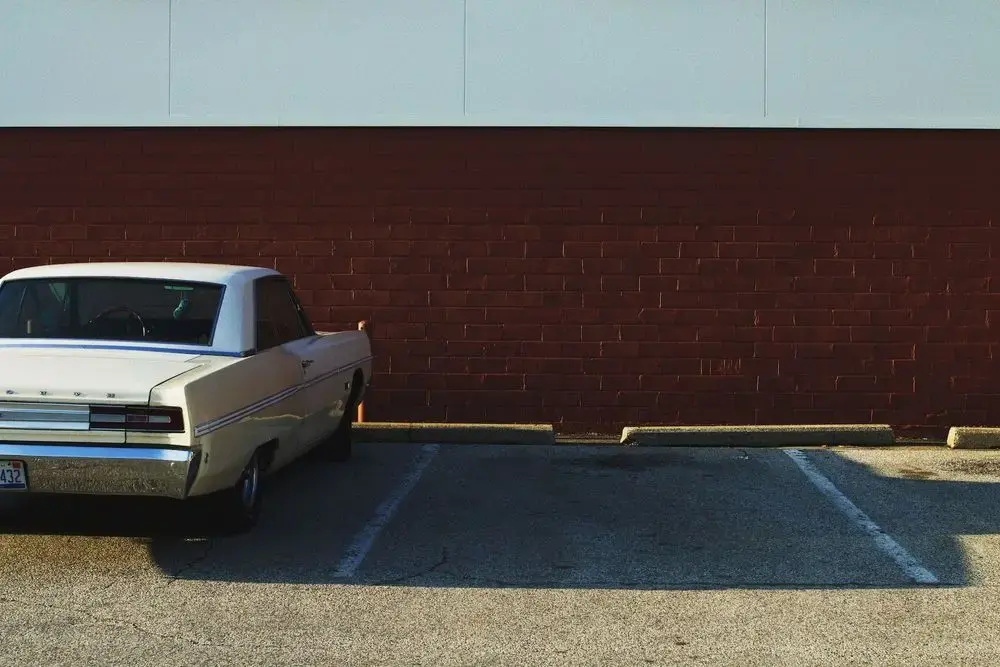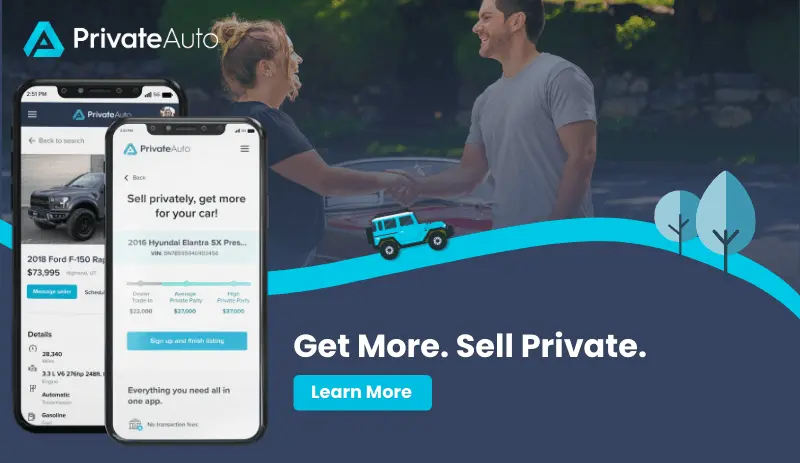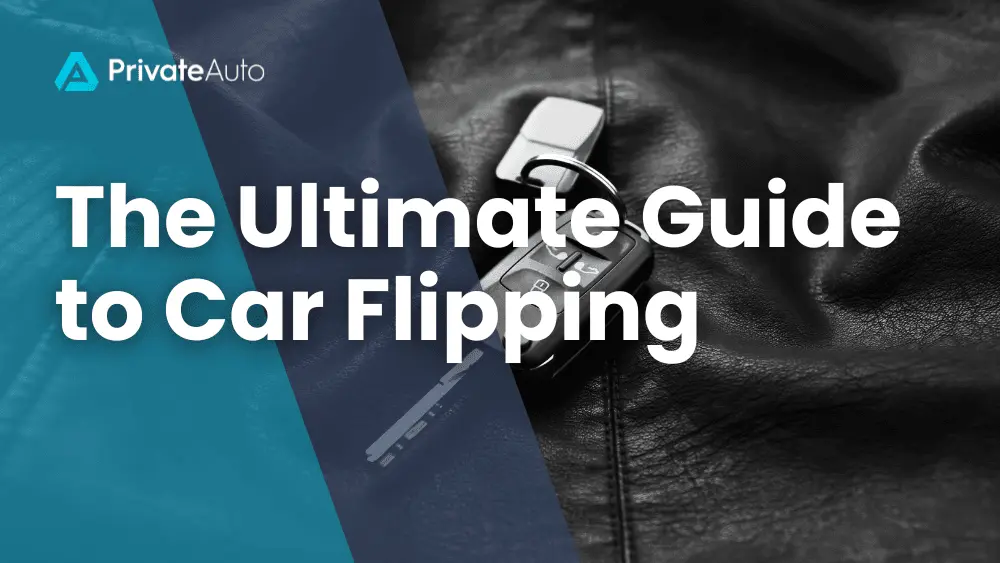It seems like there isn’t anything you can’t “flip” nowadays. The term “flipping” means to buy, fix up, and sell an item. For instance, in recent years, house flipping has become exceedingly popular. Another way you can earn a side income is car flipping. You’ve got to have the chops, and the technical knowledge, to pull it off — but this is a great way to turn a profit.
This guide will take you through a successful car flipping experience, from finding cars for sale to finding your first buyer. This can be a successful side hustle for the mechanically inclined, but it doesn’t come without risks. Let’s take a look at how to flip a car the right way, from start to finish.
1) Getting Started in Car Flipping
Getting Started – Learn the Art of Car Flipping
Most people think car flipping is really nothing more than buying low and selling high. While that’s a general explanation, it’s superficial at best. Car flipping is actually a bit more complicated. There are several aspects a successful car flipper must get right, such as:
- Having a basic understanding of state and local vehicle laws, such as how long you can hold a vehicle without registering it and when you’re required to get a dealer’s license to sell cars.
- Knowing where to find the best undervalued vehicles for sale and how to get them.
- Understanding your local market for used cars.
Make sure you’re doing things legally
Before you consider your first car flip, the most important thing you must do first is get yourself legal. Depending on how many cars you expect to sell each year, you might need a dealer license.
Each state has its own set of requirements, but if your goal is to become a car flipping guru, your state may require you to register as a dealer. In Vermont, car flippers can sell up to 12 vehicles each year with no dealer license. In other states, this number is much lower. There are even states in which the threshold is one car.
In Florida, you’re required to take a dealer licensing course with an approved school before you can apply for your dealer license. Then, there are additional steps you must take after your training, such as applying for a surety bond. From start to finish, you can expect to spend about four to six weeks completing all the details and your costs will be around $1,500.
Using Florida as an example again, you don’t necessarily have to have an actual lot where you’ll house your used cars for sale, but you do need some type of physical location to list on your dealer application. Depending on the zoning laws in your community, you may be allowed to use your home address.
Want to flip cars online? Check out PrivateAuto. We offer everything you need to safely and easily complete transactions from the comfort of home.
If you decide to lease a commercial space, prepare to add hundreds to your monthly overhead for rental fees. As long as you’re not violating any local ordinances or state laws, you can usually forego a commercial location. Go to your state’s Department of Motor Vehicles (DMV) website and verify the rules for dealer licenses so you can avoid any criminal or civil penalties before you proceed.

Finding inexpensive cars easily
– Public auctions – If you’re unlicensed, you can attend public auctions. However, if you have a dealer license, you can only dealer auctions. Luckily, dealer auctions normally have better deals and less competition.
– Craigslist – One of the best places to find used cars in bulk, but beware of the scams common on Craigslist.
– eBay Motors – A great place to find good used cars, but if you’re not local to the seller, you run the risk of costs to pick up the vehicle or to have it shipped.
– Classified ads – Your local paper could have some great deals. Being local means you won’t have far to drive to check out the vehicle in person or take it for a test drive. Plus, seeing the car in person means you can physically scout the car and make sure it’s a wise purchase.
– In your neighborhood – Online car sales platforms are gaining popularity, so seeing a “for sale” sign in neighborhood car windows isn’t that common, though not unheard of.
– Community notice boards – Just like “for sale” signs in car windows, postings on community notice boards (the kind you see at the local grocery store or laundromat) aren’t as common as they once were, but they still exist. Finding a car for sale notice on these boards is a sign of a motivated seller that wants as much exposure for their car as possible.
Know your local market for used cars
Most cities’ and states’ best cars to flip have lower mileage, are fuel-efficient, and are offered at a fantastic sale price. Think four-door sedans or mass-made SUVs by Ford, Toyota, Honda, or Chevrolet. Because these are household names, you can always find a buyer.
If you live in a more affluent region, it could be worthwhile to check out luxury vehicles or rare, stylized versions of the makes listed above. These are harder to locate and sometimes the owners are just trading up, so getting your hands on one can be pretty easy and finding buyers will be even easier if you live in a larger area.
Your climate or actual physical location can play a role in the types of cars you can find, too. For instance, if you live in a mountainous region, you’ll probably be able to find a lot of four-wheel-drive rigs, along with people looking for them. In milder, sunny climates, convertibles are likely to go quickly.
All that said, beware of cars with “cool” features, like tricked out lighting systems, aftermarket exhausts, or obnoxious spoilers. These fall into a very small niche, and if your local area doesn’t have the market, you likely won’t be able to flip it as fast as you’d like. Having to take less for a flip is hard enough – getting left holding the keys to something unsellable is a lot worse.

2) Buyer’s Checklist
Buyer’s Checklist – Investing in Your First Flips
1) Set a budget
2) Have the cash
3) Figure out the fair market value of the car
Spend some time on Kelley Blue Book or Edmunds researching the going rates for commonly made vehicles. Now, while this might sound like looking for a needle in a haystack – in the dark – it’s really not as much trouble as you’d think. For instance, if you’re going to the local auto auction, the inventory is normally published in your local paper well before the actual auction. Research the most promising cars for private party sale value.
If you’re using an online market like PrivateAuto, you can leisurely research when it’s convenient for you. The information you find helps you discover which cars are currently undervalued – meaning you could get some healthy profits out of the deal. The remaining tips here help you avoid selecting flips that may just appear undervalued.
4) Understand how to buy
One of Vin Diesel’s most iconic lines in the Fast and the Furious franchise is:
“I live my life a quarter mile at a time.”
This is so appropriate for a newbie car flipper. Don’t get in the race if you don’t know how to race. Take your time.
Before you show up at the auction or start clicking “buy” buttons, review how each auction or site operates. Auction procedures can be detailed, such as how and when you can inspect a car before the auction begins. If you don’t know these policies, you could get blasted by more experienced buyers or even disqualified from making a purchase at all.
Also, depending on your city or state’s laws regarding vehicle purchases, you might also have to transfer the title into your name and get it registered before you can resell it. If you’re buying at an auction or online site, this process is normally taken care of for you. Consult the Department of Motor Vehicles for your state before you make your first purchase.
5) Take a look at the car’s interior
When you find a car that fits all your criteria, start looking it over for any visible defects. Check out the interior for rotting floorboards, torn upholstery, missing safety features, and damaged instruments. Don’t worry about left behind personal belongings or things of that nature. You can always clean and detail the rig before you flip it.
If you’re able to open the car door, consider how the interior smells. If the previous owner was a smoker and your future buyer is not, that could be a deal-breaker. Of course, some odors can be cleaned with a bit of elbow grease, but your effort might not be worth it for a flip with a low profit margin.
6) Go over the car’s exterior
7) Take a look under the hood
Now it’s time to look at the car’s guts. Where the engine sits is the most crucial aspect of the overall sale. What’s the appearance of the engine compartment? If it’s not clean, it may need a lot of work. If you’re buying from a local private seller, chances are you’ll have time to check all the vitals. Gauge the seller’s reaction when you let them know you’ll be going over the car’s major components when you arrive – their reaction could be telltale.
If you’re at an auction, you won’t have as much time to go over a vehicle in as much depth as you might have in a private party sale. However, you’ll still want to check out as much of the car as possible, including:
- Engine oil
- Radiator
- Radiator hose
- Belts
- Transmission
- Brakes
8) How long has the car been sitting undriven?
9) Get a report on the VIN
10) Negotiate price or place your bid
After you’ve done all the research you can, it’s time to put your hat in the ring. If you’re at an auction, place a bid when the car you’re interested in comes up. Keep your emotions in check – don’t get into a bidding war just to “win” the car. You could end up paying a lot more than you intended. If another bidder wants the car that bad, let them “win”.
On the other hand, if you’re buying from a private seller, try to get the seller down as low as they’ll possibly go. Find their bottom dollar. Motivated sellers will often place “OBO”, or “Or Best Offer” in their listing – this is just one way to spot them. Another way to discern how badly they want to sell the car is to ask why they’re selling. In some cases, their answer will reveal exactly how motivated they are and how likely it is you’ll get them to come down. Always be respectful, however. Don’t ask someone to take too much less than you honestly know the car is worth, especially if the person is down on their luck and needs to sell the car to raise money for personal items, such as rent or food.
It’s not easy to walk away from a bad deal when you meet the seller face to face, but applying the same “leave the emotion out of it” rationale can keep you from getting saddled with a poor deal. There are other flippable cars out there.
11) Clean the interior and exterior thoroughly
3) Save Time and Money on Fixes Without Cutting Corners
Save Time and Money on Fixes Without Cutting Corners
Identify any mechanical problems
Do some research on your own
Because the repair shop isn’t always cost-effective when you’re trying to make a profit, study up on common issues with the vehicle you’ve purchased. YouTube has several DIY auto repair channels and sites like RepairPal can help you self-diagnose symptoms.
As you get more adept at car flipping, some issues will become second nature for you. This isn’t to say that you should attempt complicated repairs yourself, but if you can save money on the little things, save the money for your next car purchase.
Estimate costs of repairs and prepare your budget
After you’ve uncovered any problems the car has, estimate how much it will cost to fix the issues yourself or at a local trusted repair shop. Prepare a budget for the entire fix and stick to it. AAA has a handy repair cost estimator that can help you find out approximately how much your repairs will cost on any make or model across the United States.
When creating your budget, remember these factors:
– What’s actually wrong with the vehicle: This is the number one item that determines how much your flip will cost to repair. Thoroughly inspecting a car before you buy is so important. A major repair could eat up any profit you had planned.
– Your target profit margin: Once you’ve accounted for expenses, how much profit do you expect on the car flip? Consider how much you spent on the purchase and how much you think you’ll ask for it from a buyer. Using the difference, subtract your desired profit. The difference between these figures is the absolute highest you can spend on repairs.
– The make and model of the car: Repairs and normal maintenance costs can vary greatly between makes and models. Luxury vehicles cost much more over time to maintain than economy cars. So, while luxury car flipping can net you some serious profits, repairs come at a premium. If you’re just starting out flipping cars, it’s more financially responsible to begin with economy vehicles. Save up your profits and venture into luxury cars later.
– Average overall repair shop costs in your city: Depending on your location, repair charges can vary by quite a large margin. In more affluent areas or coastal cities, for instance, the cost of living is higher, and so are car repairs. Smaller towns often have fewer mechanics, so you’ll also pay a premium. Scout around for the best deals or perform the repairs yourself – whichever option shows the most promise in both time and money savings.
With your budget in hand, take a look at the most highly rated shops near you. Ask for quotes from at least two shops, more if there are several good shops. If the car has electronic issues – say, the Check Engine light’s on – you can ascertain what the issue is with a good diagnostic tool. Car diagnostic tools on Amazon only cost around $30 (pricier ones run about $100) and this saves you from paying a shop to tell you something you can find out on your own.
Review the quotes — and, if you bought a diagnostic tool, the diagnostic report — and choose the least expensive shop unless you have reason to choose a higher quote, such as the lower priced shop doesn’t have as many good reviews as the slightly higher priced shop.
Tip: The mechanic may try to upsell you, but don’t opt for nonessential repairs that aren’t going to translate into a higher resale value. A power seat, for instance, isn’t a main selling point for most used car buyers.

4) Where, When, and How to Sell a Car for Profit
Where, When, and How to Sell a Car for Profit
Pricing the car
With the research you performed at either KBB or Edmunds, consider a fair listing price, as well as a low-end amount. A buyer’s nature is to talk the salesman down – just like you did when you bought the car. Figure out the lowest amount you’ll accept for the rig.
Tip: Use both Kelley Blue Book and Edmunds to get to your fair market price. Be honest about the condition of the car and be sure to look for the car’s value in your area. Setting a rock-bottom price also ensures you don’t get carried away on your first flipping venture and lose profit.
Choose where to list the car
Now you need to discern the right place to list the vehicle.
Craigslist is not the best choice for quick flips, especially if you’re selling a special or luxury vehicle. Before you write your listing, take a look at used cars for sale near you and see:
- Where they’re listed
- What features are highlighted
- Asking price
Window signs are a good idea, and community notice boards, too. Online listing sites like Craigslist aren’t bad, either, if you’re selling a common vehicle. PrivateAuto offers online listings that stay on the site till your car is sold, window signs, and a safe, efficient experience.
Write the listing
As you’re writing, remember: good cars nearly sell themselves. There’s no need for salesy language – leave that to the car dealerships.
Great online listings have multiple photos of all aspects of the car, from the interior and exterior and all points in between. Make sure when photographing the rear end that you blur your license plate either with a photo editing tool or just by holding your finger up to block it.
List the vehicle’s main characteristics, such as engine type and transmission, as well as any special features, such as a sunroof, Bluetooth stereo, or third-row seating. The car’s condition should be generally described, such as “needs work”, “good family car”, or “in excellent condition”. If there are any major issues, list them. If you don’t, and a potential buyer catches something you neglected to mention, you’ve just lost the sale.
Listing on a community notice board means giving out personal details, such as email, phone number, and/or address. On PrivateAuto, your personal information is safe.
Also, you don’t have to limit yourself to just one type of listing. In other words, consider the different types of buyers who might be interested in your used car – moms, college students, an elderly community member who just needs a get-around-town car. Each prospective buyer needs a different kind of listing to catch their attention, and different placement. For instance, moms may frequent social media, so a Facebook marketplace ad could work. College students may scout neighborhoods for used cars for sale, and elderly residents may check out the community notice boards in the local grocery stores. Place your listing where your ideal buyer is bound to see it.

Closing the sale
Verify their payment method
Meeting and vetting interested parties
If the buyer states they’re willing to pay in cash, have a chat. Your goal is confirmation that they’re actually interested in the car and not just looking around. Ask them why they’re interested in buying by asking questions like:
- Are you buying for your student?
- Are you adding a second car?
- Getting out of a car loan or lease?
If a buyer is legit, they’ll be more than happy to explain why they’re looking.
Once you feel comfortable with a buyer, decide on a place and time to meet. Meeting in a public place is always best, such as at the local grocery store, a church in town, or in the high school parking lot. If you’re meeting them in their town, it’s always good practice to let someone else know where you’re headed and when. If you’ve got a buddy that can ride along, even better.
When you finally meet, don’t be shy about chatting some more with the buyer. Reiterate your questions from the phone conversation. Watch for changing stories or a hesitance to share reasons. You likely had more than one phone call or email regarding this car – if you don’t feel comfortable with the sale, you’ll find another buyer.
To negotiate – or not to negotiate
On the topic of negotiations, there’s two firm camps amongst car flippers – absolutely, and absolutely not.
If you don’t mind negotiating, price your car a little on the high end, about 15% above the car’s fair market price for a private party sale. A smart buyer will most likely try to get you to come down. This is fine since you built some wiggle room into your price. Flippers who are for negotiation say buyers enjoy being able to haggle and feel as though they’ve gotten a good deal.
If, on the other hand, you don’t want to negotiate and selling the car in a hurry isn’t necessary, price the car a bit lower – even just under fair market price. At some point, someone will buy. You’ll still make a profit and your eventual buyer gets a great deal.
